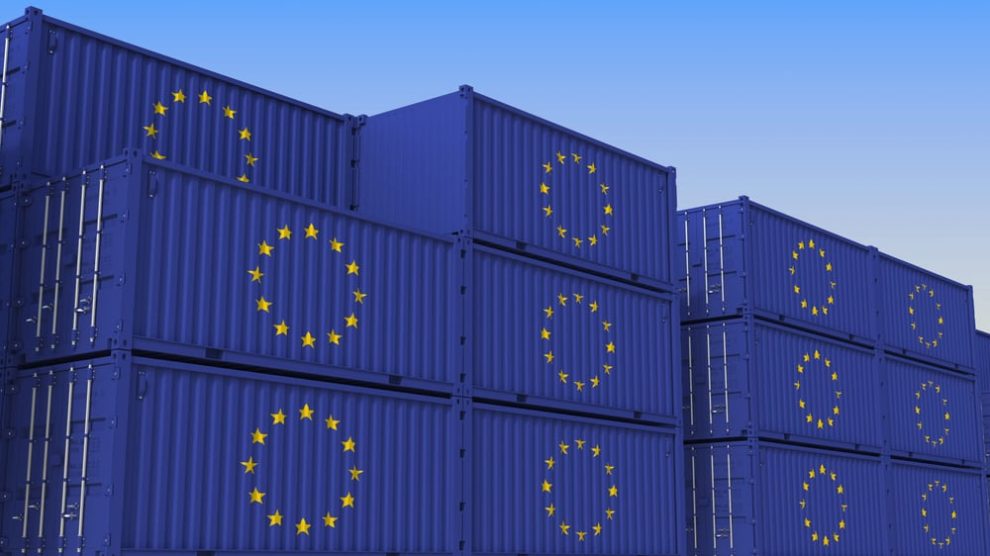After a fall in 2020 and a limited increase in 2021, European clothing imports rebounded by 36% in 2022 to 98 billion euros, a level that is 11.6% higher than in 2019. European exports show an acceleration of 33.46% in three years, mainly driven by American, Korean and Turkish demand.
Asia accounts for 75.8% of European clothing imports in 2022, a share that is stable compared to 2019. After stagnating in 2020 and 2021, imports from the leading supplier, China, exploded by 32% over one year, but only rose by 7.7% compared to 2019.
After two years of yo-yoing, Bangladesh’s imports in 2022 show a rise of 52% year-on-year to a level 23.4% higher than before the crisis. Turkey, the EU’s third largest supplier, is back to its 2019 levels.
All the increases are in double digits for the Top 20 suppliers, except for the UK which, after the a decline of 63% in 2021, continues with a 22% decrease in its clothing exports to the EU. Burma, after two years of decline, shows an 85% year-on-year acceleration, and a level 27.8% higher than in 2019, before the health crisis and the military coup.
Notable increases can also be seen in other Asia-Pacific countries, such as India (+36%), Vietnam (+51%), Pakistan (+43%), Cambodia (+51%), Sri Lanka (+228%), Indonesia (+39%) and Thailand (+27%). Morocco and Tunisia have seen respective increases of 20% and 25% in the value of their shipments to Europe over a year.
33.5% more exports than in 2019
Still on the international clothing market, the European Union exported goods worth 38.7 billion euros. This represents an increase of 17% over one year and 33.5% compared with 2019.
Switzerland remains the EU’s leading clothing customer. As in 2021, the year from which the British market was accounted for separately, the United Kingdom is Europe’s second largest customer in 2022. It is ahead of the United States, which increased its orders by 49% in 2022, and ahead of China. After a sharp rise in 2021, China’s orders stagnated in 2022. South Korea, which follows the Middle Kingdom in the rankings, saw its orders accelerate by 32% over one year.
It is worth noting that Russia, which was ranked third in 2019, is in ninth place in 2022, with €1.41 billion worth of European clothing. This is a drop of 37% over one year, and 42.7% compared to pre-crisis levels. On the other hand, Ukraine, which ranked sixteenth, shows a 24% year-on-year decline, but a similar amount of orders compared to 2019.
Among the strong regional increases in European exports, the 89% acceleration in Turkey stands out, confirming the 26% acceleration noted in 2021. In addition, orders from Singapore rose by 95%, those from Canada by 49%, those from Mexico by 48% and those from the United Arab Emirates by 43%. Also noteworthy is the 41% growth in orders from Serbia, which remains one of the EU’s top 20 customers.
The evolution of textiles
Talking about trade in textiles remains a delicate exercise, as sanitary masks are counted in the category and can alter the figures obtained. Figures that indicate that European textile imports in 2022 were 25.6% higher than in 2019. China remains by far the largest supplier. It is followed by Turkey, Pakistan and India, which show increases ranging from 14% to 37% over the year. The fifth place in the ranking is occupied by the United Kingdom, which shines this year by its stability, after the 18% drop experienced in 2021.
The increases are no less notable further down the the ranking, respectively occupied by the USA (+37%), South Korea (+26%), Vietnam (+47%) and Japan (+27%). It should be noted that Bangladesh’s exports to the EU in 2022 are 39.6% higher than in 2019. It should also be noted that Ukraine, which in 2021 ranked 19th among the EU’s suppliers, has lost ground this year to Australia, which has regained its 2019 level.
European textile exports reached 28.6 billion euros in 2022. A 13% increase over one year, placing exports just below their 2019 levels. The United States, the United Kingdom, Turkey and China are the leading customers for European textiles, ahead of Morocco, Switzerland, Mexico (+87%) and Tunisia.
Russia has dropped from eighth to eleventh place among EU customers, with a 30% fall over a year, placing it two places below Ukraine, which is up by 6%. The United Arab Emirates are back in the Top 20, from which Egypt has emerged, and where notable increases are to be noted for Serbia (+24%) and India (+21%).
Source : Fashion Network




























